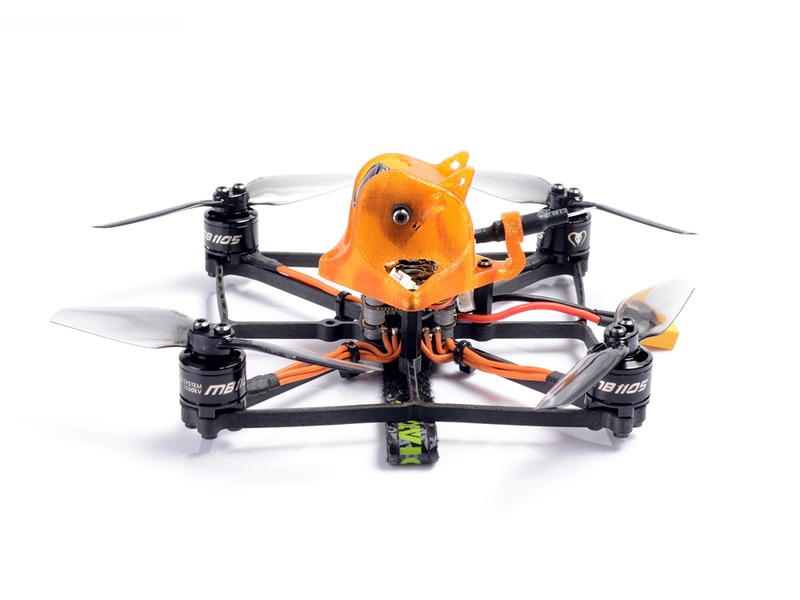Is drone racing difficult?

Drone racing is a relatively new sport that has been gaining in popularity in recent years. It is a fast-paced, high-stakes competition that requires skill and precision to be successful. While it may seem intimidating to some, drone racing can be a fun and rewarding experience for those who are willing to put in the time and effort to learn the basics.
The difficulty of drone racing depends on the individual and their level of experience. For those who are just starting out, the learning curve can be steep. There are a lot of different components to consider when flying a drone, such as battery life, speed, and maneuverability. It can take some time to get used to the controls and understand the physics behind the flight. Additionally, there are many different types of drones available, each with their own unique characteristics. This can make it difficult to choose the right one for your needs.
Once you have a basic understanding of how to fly a drone, the next step is to practice and hone your skills. The best way to do this is to join a drone racing league or club. Here, you can learn from experienced pilots and compete against other racers. This will help you to become more familiar with the rules and regulations of the sport, as well as the different techniques used to win races.
When it comes to the actual race itself, the difficulty level can vary depending on the type of course and the number of competitors. Some courses may be more complex than others, requiring more skill and strategy to navigate. Additionally, the number of competitors can affect the difficulty level, as more experienced pilots may be able to outmaneuver and outpace less experienced ones.
In conclusion, drone racing can be difficult for those who are just starting out. However, with practice and dedication, it can become an enjoyable and rewarding experience. As with any sport, the difficulty level can vary depending on the individual and the type of course. With the right attitude and commitment, anyone can become a successful drone racer.
Comments / Question
2. Learn the Course: Spend time studying the course layout so that you can gain an understanding of the best lines and strategies to take on each section of the track.
3. Tune Your Drone: Make sure your drone is tuned and set up correctly. This involves selecting the right propellers, motors, and batteries, as well as calibrating the drone’s settings for optimal performance.
4. Improve Your Reaction Time: Working on your reaction time and reflexes can help you get the best start and keep ahead of the competition.
5. Invest in the Right Gear: Invest in the right gear such as FPV goggles, controllers, and antennas to help you get the most out of your drone racing experience.
6. Take a Break: Don’t forget to take a break and rest your mind and body. This can help you stay focused and perform at your best.
2. Technical Issues: Drone racers must be familiar with the technology and mechanics of their drones in order to ensure they are functioning properly.
3. Line of Sight: Drone racers must be able to keep their drones in sight at all times, which can be difficult in large or crowded areas.
4. Interference: Radio frequency interference from other drones or other electronic devices can disrupt the signal between the drone and the controller.
5. Battery Life: Drone batteries can run out quickly, so racers must be prepared to replace them or recharge them quickly.
6. Crashes: Crashes can occur due to technical issues, weather conditions, or pilot error, and can cause significant damage to the drone and its components.
2. Check the area for any obstacles before beginning the race.
3. Follow the rules and regulations of the race set forth by the governing body.
4. Ensure that the drone is in good condition and is properly calibrated before taking off.
5. Do not fly the drone too close to other people or objects.
6. Do not fly the drone in areas with high traffic or in restricted air spaces.
7. Stay aware of your surroundings at all times and be aware of any potential hazards.
8. Do not fly the drone when it is raining, snowing, or when visibility is poor.
9. Make sure to keep the drone within your line of sight at all times.
10. Never fly the drone when you are under the influence of alcohol or drugs.
2. Spatial Awareness: Drone pilots must be aware of their surroundings while racing and be able to anticipate the movements of other racers.
3. Technical Knowledge: Pilots must have a good understanding of the technical aspects of their drones, including the motors, propellers, batteries, and flight controllers.
4. Strategic Thinking: Pilots must be able to think strategically and plan out their routes in order to maximize their speed and maneuverability.
5. Problem Solving: Pilots must be able to quickly identify and troubleshoot any technical issues that arise during a race.

